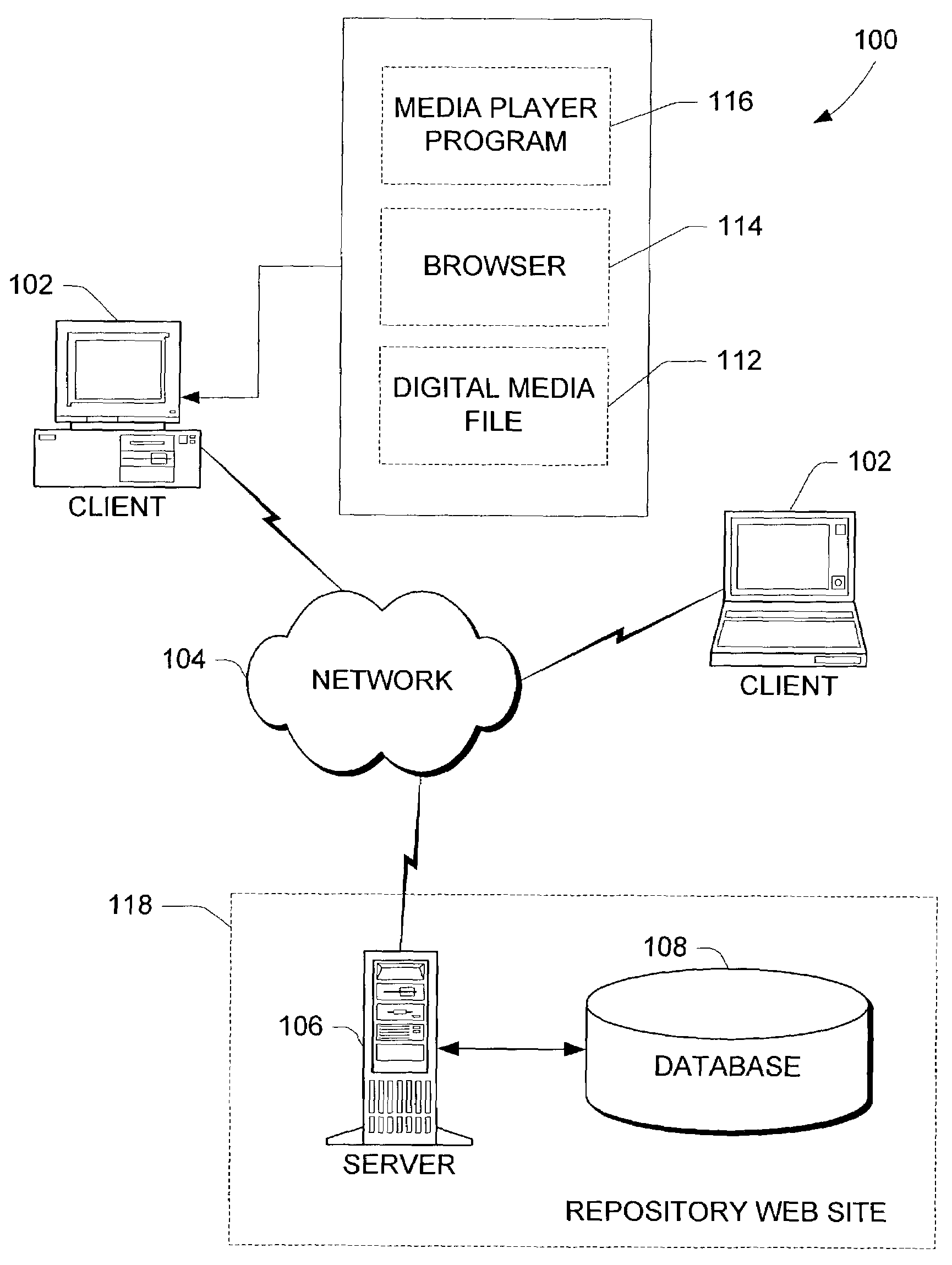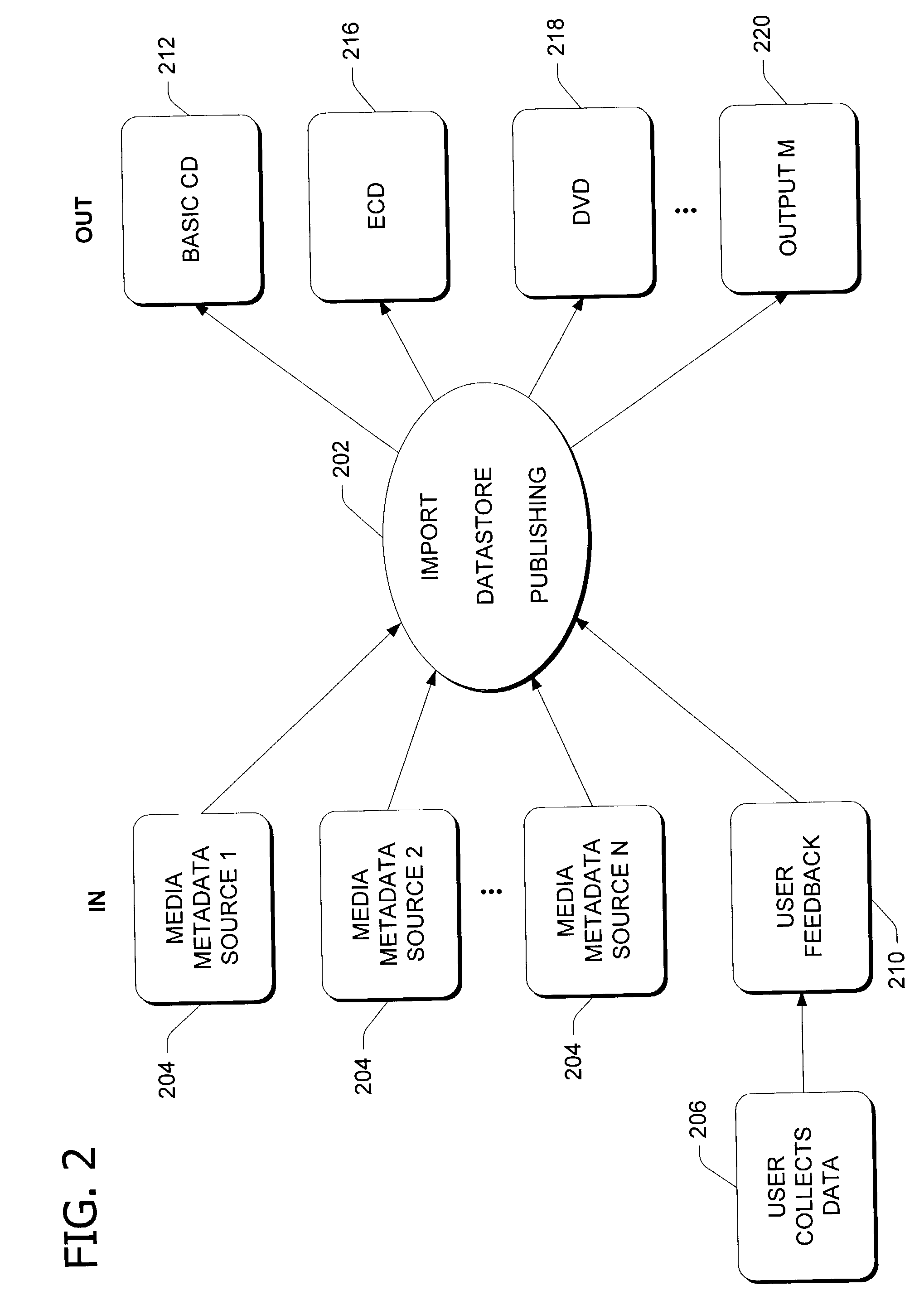Media identifier registry
a media metadata and registry technology, applied in the field of data management and publishing, can solve the problems of difficult identification and retrieval of media metadata for specific media files, large data publications of media metadata, and high query traffic, and achieve the effects of less labor, convenient implementation, and enhanced user experien
- Summary
- Abstract
- Description
- Claims
- Application Information
AI Technical Summary
Benefits of technology
Problems solved by technology
Method used
Image
Examples
Embodiment Construction
[0021]Referring now to the drawings, FIG. 1 illustrates an exemplary network environment in which the present invention can be used. A system 100 has one or more client computers 102 coupled to a data communication network 104. One or more server computers 106, sometimes referred to as “web servers” or “network servers,” are also coupled to the network 104. In turn, the client computer 102 can access the server 106 via network 104. As shown in FIG. 1, the system 100 also includes one or more databases 108 associated with server 106.
[0022]In this example, network 104 is the Internet (or the World Wide Web). However, the teachings of the present invention can be applied to any data communication network. Server 106 and client computer 102 communicate in the illustrated embodiment using the hypertext transfer protocol (HTTP), a protocol commonly used on the Internet to exchange information.
[0023]Referring further to FIG. 1, the user's computer 102 accesses a digital media file 112, suc...
PUM
 Login to View More
Login to View More Abstract
Description
Claims
Application Information
 Login to View More
Login to View More - R&D
- Intellectual Property
- Life Sciences
- Materials
- Tech Scout
- Unparalleled Data Quality
- Higher Quality Content
- 60% Fewer Hallucinations
Browse by: Latest US Patents, China's latest patents, Technical Efficacy Thesaurus, Application Domain, Technology Topic, Popular Technical Reports.
© 2025 PatSnap. All rights reserved.Legal|Privacy policy|Modern Slavery Act Transparency Statement|Sitemap|About US| Contact US: help@patsnap.com



